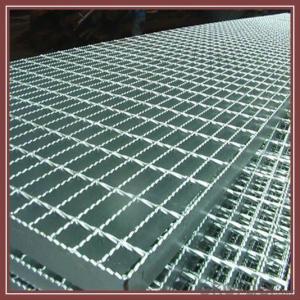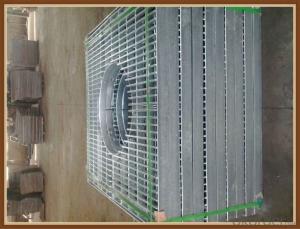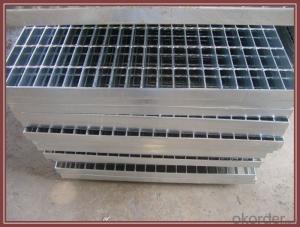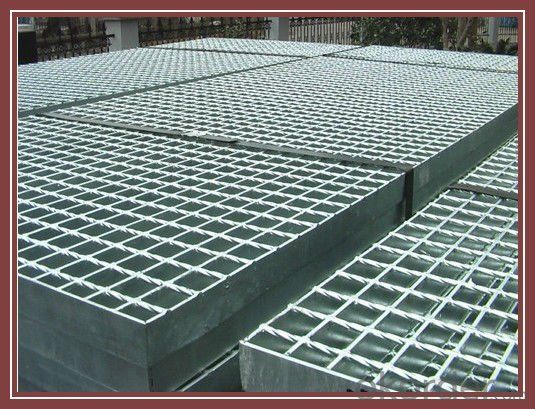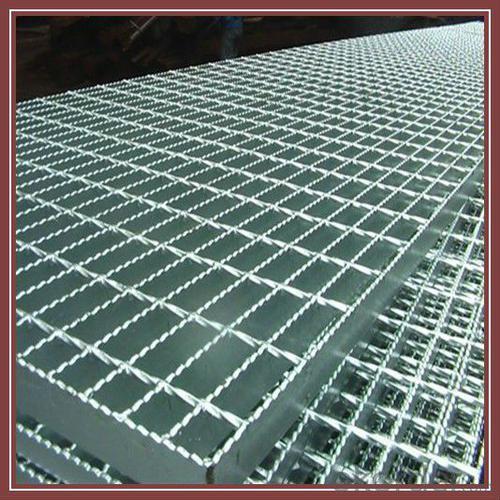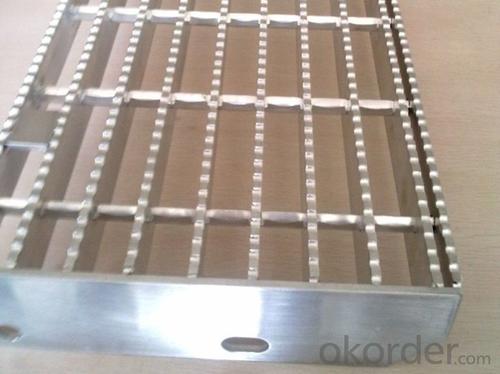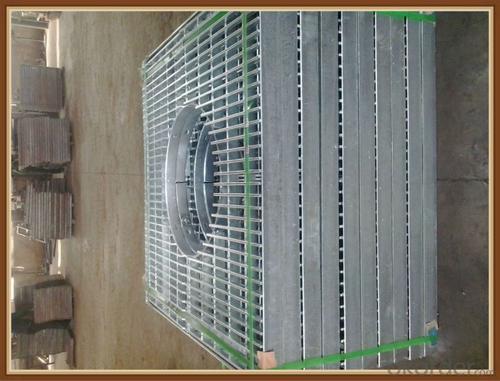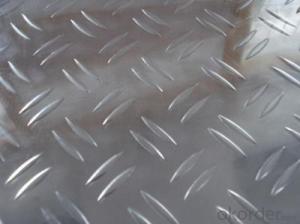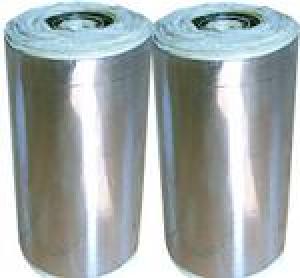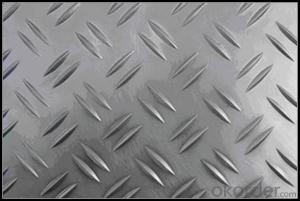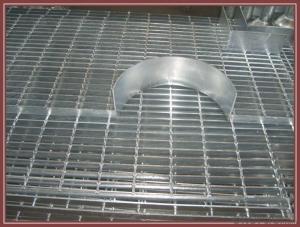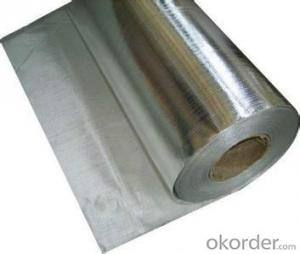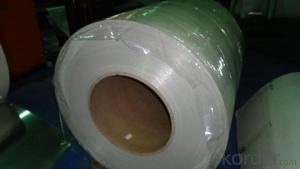500 Sheets of Aluminum Foil 9 In - Anti-Corrosion and High Strength Aluminum Alloy Gratings Stair Tread Steps
- Loading Port:
- Qingdao
- Payment Terms:
- TT OR LC
- Min Order Qty:
- 5000 pc
- Supply Capability:
- 6000000 pc/month
OKorder Service Pledge
OKorder Financial Service
You Might Also Like
1.Description of Drainage trench cover:
Drainage trench cover is widely used in the urban road, the square, the botanical garden, the wharf, the airport, the parking lot, the road, each kind of industry, the civil project, etc.
2.Main features of Drainage trench cover:
I--Carrying 20 tons of weight
II—Carrying 14 tons of weight
III---carrying 6 tons of weight
IV---carrying 2 tons of weight
V---Carrying pedestrian weight
3.Drainage trench coverImages:
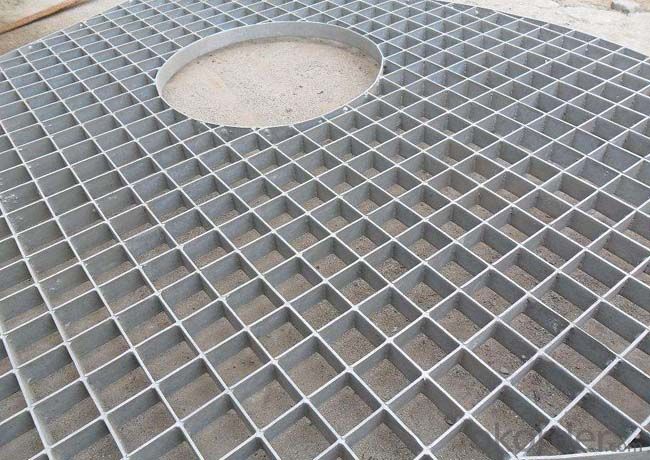
4. Drainage Trench Cover Technical Parameters:
These drain cover plate applies to the road cross-sectional and longitudinal drain. The drains width ranging from 200mm to 550mm.
A means the steel grating length
H means the steel grating height
A means the frame length
H means the frame height
5.FAQ
We have organized several common questions for our clients,may help you sincerely:
①How about your company?
A world class manufacturer & supplier of Drainage trench cover is
one of the large scale professional investment casting production bases in China,consisting of both casting foundry forging and machining factory. Annually more than 8000 tons Precision casting and forging parts are exported to markets in Europe,America and Japan. OEM casting and forging service available according to customer’s requirement.
②How to guarantee the quality of the products?
We have established the international advanced quality management system every link from raw material to final product we have strict quality test; We resolutely put an end to unqualified products flowing into the market. At the same time, we will provide necessary follow-up service assurance.
- Q: is general aluminum sheet fire-proof?
- general aluminum sheet is less fireproof than tinfoil.
- Q: Are 101 aluminum sheets suitable for aircraft manufacturing?
- Indeed, aircraft manufacturing finds 101 aluminum sheets to be a suitable choice. This alloy, commonly utilized in the aerospace sector, possesses a high strength-to-weight ratio, outstanding resistance to corrosion, and remarkable formability. Notably, it is exceptionally fitting for constructing structural elements and skin panels in aircraft production. Moreover, the versatility and efficiency of 101 aluminum sheets are evident in their ease of machining, welding, and joining. Consequently, these sheets are widely employed in aircraft construction, meeting the industry's stringent requirements with great success.
- Q: Can aluminum sheets be used in outdoor environments?
- Indeed, aluminum sheets are capable of being utilized in outdoor settings. Aluminum, a material that is both highly adaptable and enduring, proves to be a fitting choice for outdoor uses. Its exceptional resistance to corrosion renders it well-equipped to endure environmental factors like rain, snow, and UV radiation. Moreover, aluminum sheets are characterized by their lightweight nature and structural robustness, rendering them appropriate for a multitude of outdoor endeavors, including roofing, siding, and cladding. Furthermore, aluminum's non-combustible nature makes it a secure option for outdoor environments. All in all, aluminum sheets offer a dependable and enduring solution for outdoor applications.
- Q: Can the aluminum sheets be used for manufacturing automotive radiators?
- Yes, aluminum sheets can be used for manufacturing automotive radiators. Aluminum is a popular choice for automotive radiators due to its lightweight, excellent heat transfer properties, and corrosion resistance. Aluminum sheets can be easily formed into the required shape and size for radiator construction. Additionally, aluminum radiators offer better cooling efficiency compared to traditional copper radiators. Therefore, using aluminum sheets for manufacturing automotive radiators is a viable and advantageous option.
- Q: Describe the steps involved in the production of aluminum sheets.
- <p>The process of manufacturing aluminum sheets involves several key steps. Initially, raw materials, primarily bauxite, are mined and then processed to extract alumina (aluminum oxide). This alumina is then mixed with cryolite and fed into a reduction cell where it is subjected to a strong electric current, causing the aluminum to be reduced and extracted. The molten aluminum is then poured into molds to cool and solidify into ingots. These ingots are subsequently rolled into sheets in a hot or cold rolling process, where they are gradually reduced in thickness and width. The sheets are then annealed to improve their ductility and strength. Finally, they undergo various finishing processes such as cleaning, coating, or cutting to meet specific requirements before being packaged and shipped to customers.</p>
- Q: What are the different types of alloys used for aluminum sheets?
- Aluminum sheets can be made from different types of alloys, each with its own unique properties and uses. Here are some of the most commonly used ones: - The 1100 alloy is pure aluminum and has excellent resistance to corrosion and good formability. It is often utilized for general sheet metal work like roofing and siding. - The 3003 alloy is similar to 1100 but contains added manganese, which makes it slightly stronger. It is commonly employed for applications that require moderate strength and good resistance to corrosion, such as packaging and automotive parts. - The 5052 alloy is renowned for its exceptional corrosion resistance, particularly in marine environments. It is also highly formable and weldable, making it suitable for various applications like fuel tanks, marine components, and architectural panels. - The 6061 alloy is one of the most versatile and widely used aluminum alloys. It offers excellent strength, weldability, and resistance to corrosion. It is commonly found in structural applications like aircraft parts, bicycle frames, and automotive components. - The 7075 alloy is a high-strength alloy frequently utilized in aerospace and military applications. It exhibits excellent resistance to fatigue and is easily machinable. It is typically employed for aircraft structures, missile parts, and high-stress components. These examples illustrate the variety of aluminum alloys available for sheet production. The choice of a specific alloy depends on desired properties, such as strength, resistance to corrosion, formability, and cost, as well as the intended application.
- Q: What are the different methods of surface preparation for aluminum sheets?
- There are several methods of surface preparation that can be used for aluminum sheets. These methods are designed to clean, treat, and prepare the surface of the aluminum to ensure optimal adhesion and paint durability. Here are some of the different methods of surface preparation for aluminum sheets: 1. Mechanical Abrasion: This method involves using abrasive materials such as sandpaper, wire brushes, or sandblasting to physically remove any dirt, rust, or oxidation from the surface of the aluminum. Mechanical abrasion creates a rough texture on the surface, which promotes paint adhesion. 2. Chemical Cleaning: Chemical cleaning involves using acidic or alkaline solutions to remove any contaminants or oxidation from the surface of the aluminum. This method is particularly effective for removing tough stains, oils, or greases. The surface is typically rinsed thoroughly after chemical cleaning to remove any residue. 3. Etching: Etching is a process that involves applying an acidic or alkaline solution to the aluminum surface to create a microscopically rough texture. This rough surface enhances paint adhesion and provides a better bonding surface for coatings. Etching is commonly used as a pre-treatment before applying a primer or paint. 4. Conversion Coating: Conversion coating is a surface treatment method that involves applying a chemical solution to the aluminum surface to create a thin, protective layer. This layer not only improves paint adhesion but also provides corrosion resistance. Common conversion coatings for aluminum include chromate conversion coatings and phosphoric acid anodizing. 5. Mechanical Cleaning: Mechanical cleaning involves using mechanical methods such as brushing, scraping, or buffing to remove loose particles, dirt, or debris from the surface of the aluminum. This method is often used as a preliminary step before applying other surface treatments or coatings. It is important to note that the choice of surface preparation method may vary depending on the specific requirements of the aluminum sheet's application, the condition of the surface, and the desired finish. Proper surface preparation is crucial to ensure the longevity and performance of the paint or coating applied to aluminum sheets.
- Q: What are the different methods of surface laminating aluminum sheets?
- There exist various techniques for surface laminating aluminum sheets, each with its own distinct advantages and suitability for different purposes. Some of the commonly utilized methods comprise: 1. Adhesive bonding: This involves the application of an adhesive layer between the aluminum sheet and the desired surface material. The adhesive is typically cured through the application of heat or pressure, resulting in a robust bond. This technique is versatile and can be employed with a range of surface materials, including wood, plastic, or glass. 2. Roll bonding: Also referred to as cladding or cold roll bonding, this method entails placing the aluminum sheet between two other metal sheets and subjecting them to high pressure to create a solid bond. Roll bonding is frequently employed in the production of composite materials, such as aluminum-clad steel sheets. 3. Thermal spraying: This process entails melting or heating aluminum powder and using a thermal spray gun to spray it onto the sheet surface. The molten aluminum solidifies upon contact, forming a durable coating. Thermal spraying is commonly used for corrosion protection or as a foundation layer for subsequent surface treatments. 4. Powder coating: In this technique, a dry powder paint is electrostatically applied to the surface of the aluminum sheet. The sheet is then heated, causing the powder to melt and form a smooth and protective coating. Powder coating offers exceptional durability, impact resistance, and a wide array of color options. 5. Anodizing: Anodization is an electrochemical process that enhances the natural oxide layer on the surface of aluminum sheets. By immersing the sheet in an electrolytic bath and applying an electric current, a controlled oxide layer is formed, providing corrosion resistance, improved adhesion for paint or adhesive, and aesthetic finishes. 6. Lamination with protective films: A plastic protective film can be applied to the surface of the aluminum sheet for safeguarding purposes during transportation, handling, or processing. These films offer temporary protection against scratches, abrasions, and dirt. These represent just a few among many techniques available for surface laminating aluminum sheets. The choice of method depends on factors such as desired properties, intended use, and specific application requirements.
- Q: How do aluminum sheets perform in terms of machinability?
- Known for their excellent machinability, aluminum sheets can easily be cut, drilled, and shaped using various machining processes such as milling, turning, and drilling. Compared to materials like steel, aluminum has a low melting point and is relatively soft, making it more manageable to work with. Additionally, aluminum sheets offer good chip control, resulting in smaller and more manageable chips during machining. This not only reduces the risk of tool breakage but also improves the overall efficiency of the machining process. Furthermore, aluminum sheets possess exceptional thermal conductivity, effectively dissipating heat generated during machining. As a result, tool wear is minimized, and the life of the tool is prolonged. With their ease of machining and versatility, aluminum sheets find wide applications across various industries.
- Q: Can aluminum sheets be used for roofing applications?
- Aluminum sheets are suitable for roofing due to their lightweight and durable nature, along with their excellent resistance to corrosion. They are particularly well-suited for areas with high humidity or coastal regions that experience saltwater exposure. Known for their longevity and low maintenance requirements, aluminum roofing sheets are also fire-resistant and can withstand extreme weather conditions. This makes them a popular choice for residential and commercial roofing projects. Furthermore, aluminum sheets are easy to install and can be shaped and formed to fit various roof designs. In addition to their practical benefits, aluminum is an environmentally friendly option for roofing applications as it can be recycled repeatedly without any loss in quality.
Send your message to us
500 Sheets of Aluminum Foil 9 In - Anti-Corrosion and High Strength Aluminum Alloy Gratings Stair Tread Steps
- Loading Port:
- Qingdao
- Payment Terms:
- TT OR LC
- Min Order Qty:
- 5000 pc
- Supply Capability:
- 6000000 pc/month
OKorder Service Pledge
OKorder Financial Service
Similar products
Hot products
Hot Searches
Related keywords

